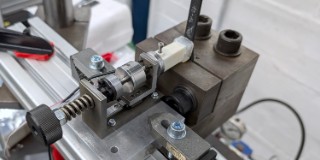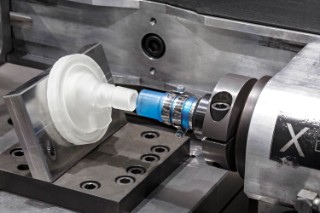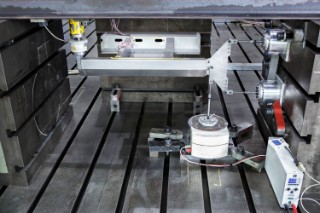Technologies for rapid adaptation to changing requirements in the event of operational changes in the structural dynamic properties of mechanical systems, e.g. for intralogistics systems, machine tools, vehicles
more infoProjects
-
-

DNAguss stands for continuous numerical design along the process chain of cast components and is an innovative research project that focuses on optimizing the design of cast components using the material EN-GJS-400-18-LT as an example. The aim of the project is to combine all software tools used during the design process of cast components into a single software chain in order to optimize castability, lightweight design and non-destructive testability while ensuring operational strength.
more info -
Efficient and low-emission hybrid concepts for commercial vehicles: more range, lower total cost of ownership, compressed natural gas, validation in real-world operation.
more info -

Flexible and efficient laboratory technology for the investigation of chassis systems of current and future vehicle concepts, multiaxial testing environment with load scenarios, suspension, air spring, active dampers, fatigue strength verification, functional verification, hardware in the loop.
more info -

In the RE-IMPACT project, we have developed a non-destructive testing method based on the electromechanical impedance (EMI) method, which can be used to detect structural changes at an early stage and continuously monitor material quality.
more info -

Predictive maintenance and online monitoring in vehicle construction require precise characterization of the components to be monitored. Together with BMW, Fraunhofer LBF has developed a new methodology for simplified testing and characterization of structure-integrated high-voltage batteries. This involves testing a part of the car body with an integrated high-voltage battery on a multiaxial vibration table. Bearings with adjustable stiffness replicate the stiffness of the rest of the car body, enabling different scenarios to be tested quickly.
more info -

Various measuring methods and measuring setups were presented in order to comprehensively characterize the electrical properties of elastomers, thermoplastics, and thermosets. In the field of electrical insulation, breakdown voltage, dielectric strength, electrostatic properties (charging by friction or discharging behavior) and (the very low) electrical conductivity are important. In the case of antistatic or conductive plastics, the electrical volume and surface conductivity must be characterized. Especially in the field of AC and high-frequency applications, it is also necessary to measure electrical permittivity.
more info
 Fraunhofer Institute for Structural Durability and System Reliability LBF
Fraunhofer Institute for Structural Durability and System Reliability LBF

